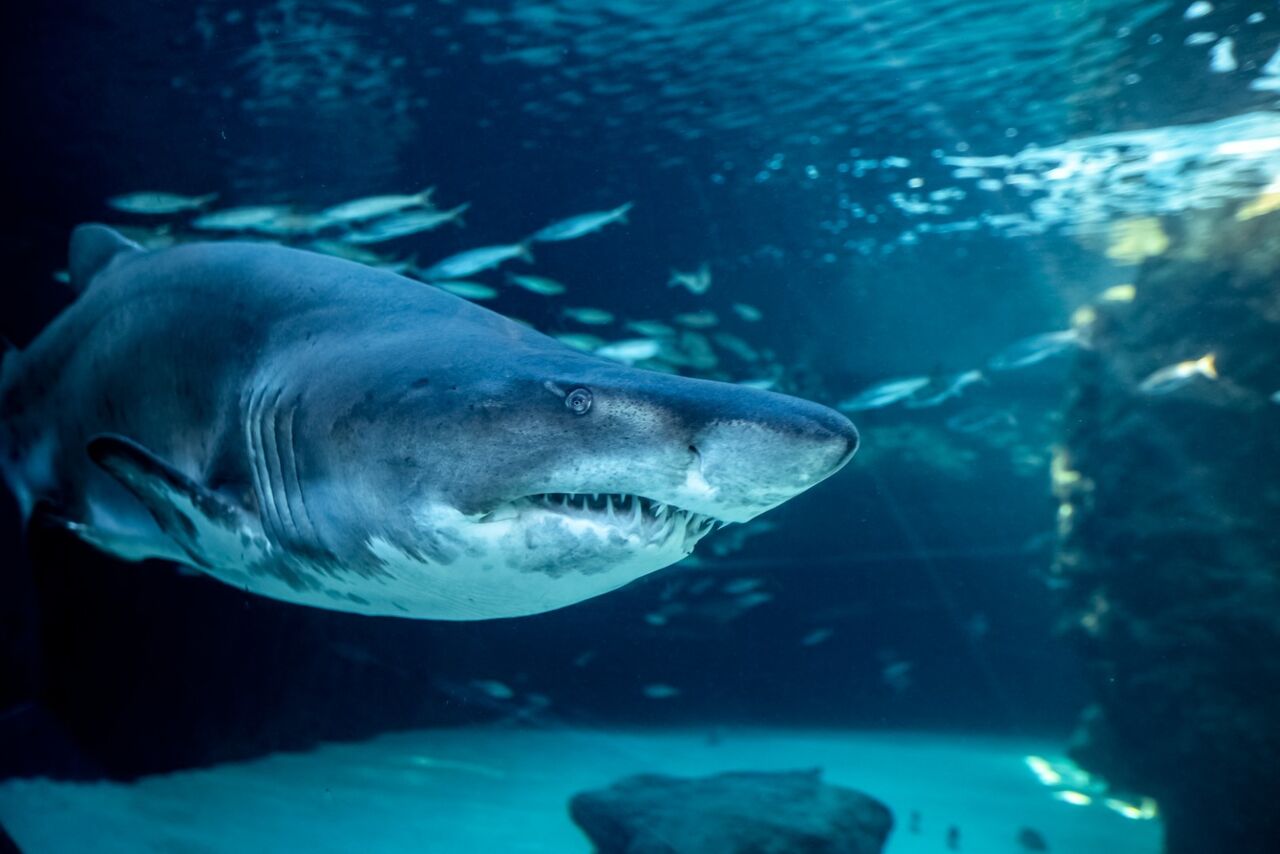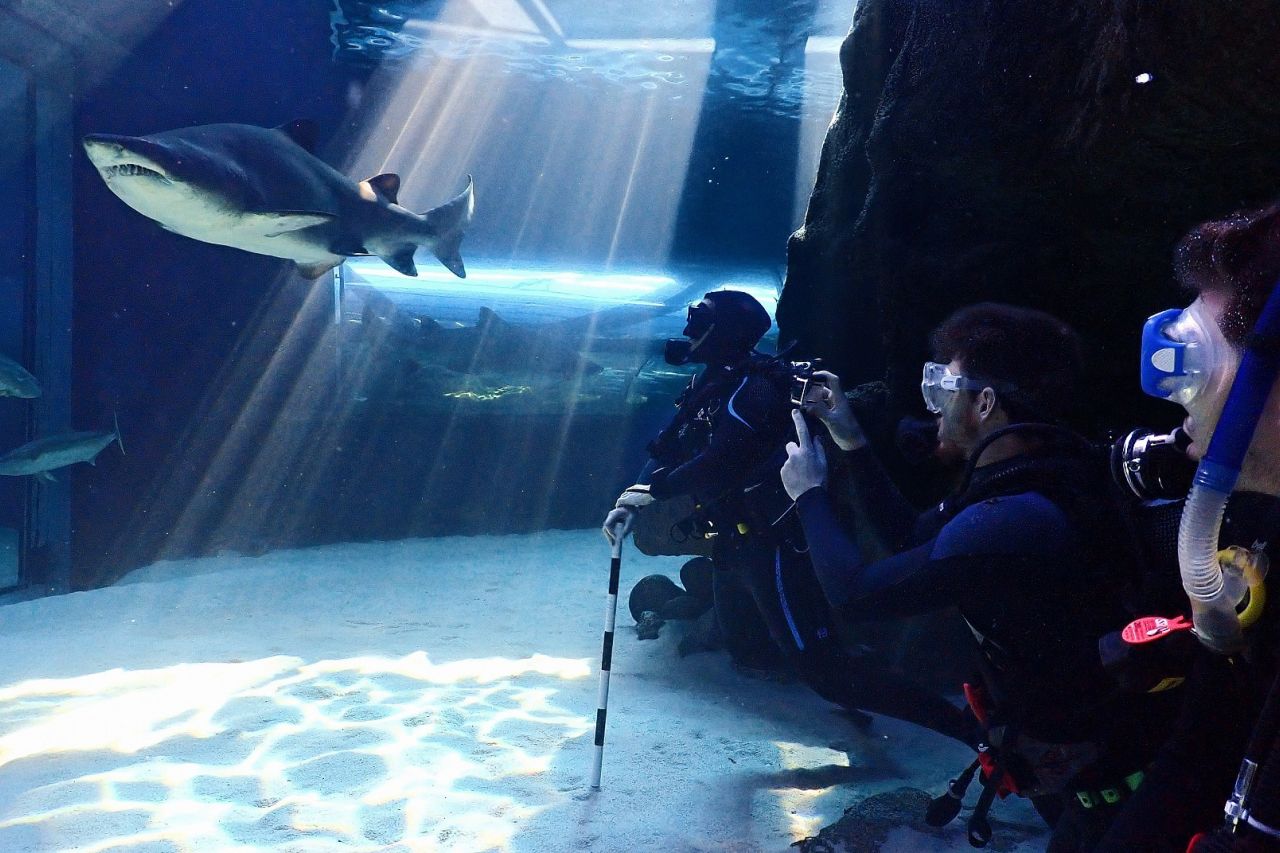The Save Our Seas Foundation Shark Exhibit might be best known for its ragged-tooth sharks, but there is much more to it than jaws and teeth! Here are ten things to keep a look out for on your next visit:
1. Yawning sharks
Why do sharks "yawn"? An aquarist captured these photos of one of our ragged-tooth sharks showing off her teeth and we had to know why!
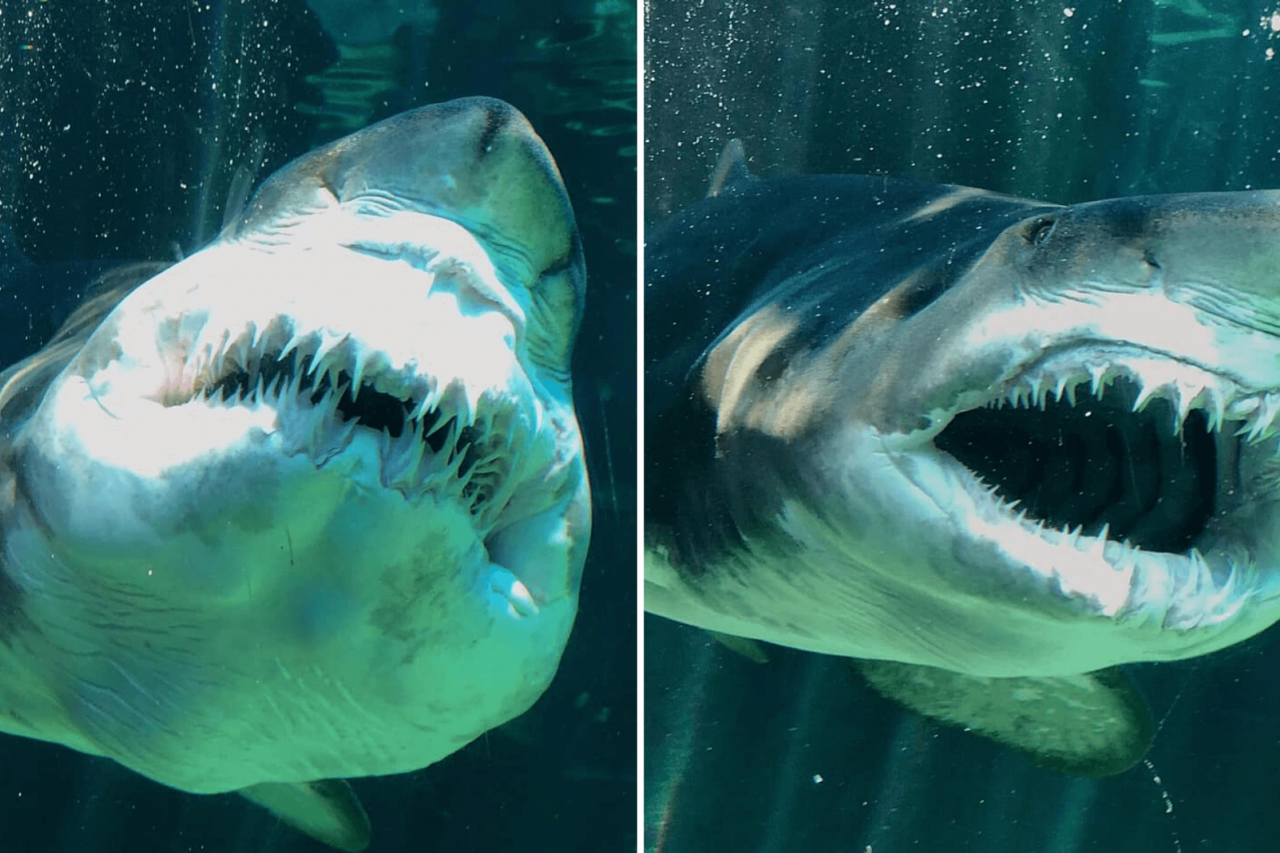
The answer is simple really: The jaws of sharks are extraordinarily complex, not only do they open and close, but the jaws also extend from the mouth during a bite and retract again when they close. Like any complex system, it needs maintenance and that's just what this shark is doing - having a good stretch to keep its jaws limber and well-aligned.
2. Extreme vacuum cleaning
Ragged-tooth sharks might be beautiful, but they can make a mess! In the ocean, shark poop and other fishy mess eventually becomes part of the ecosystem again, giving its nutrients to microorganisms that use it to grow and boost the bottom of the food chain.
This happens at the Two Oceans Aquarium too – but those microorganisms can make the water murky, and in a closed environment like the Save Our Seas Foundation Shark Exhibit they can take up the oxygen that our sharks need to survive. For this reason, teams of divers hop into the exhibit every day to siphon up any mess that our sharks may have made.
3. Grumpy rockcod
The yellowbelly rockcod in the Save Our Seas Foundation Shark Exhibit may seem like the grumpiest fish of them all – but he just likes his space! Rockcods like to have designated “rest spots” where they can keep an eye on their environment, so keep an eye out for the holes that our rockcod digs in the sand – he likes to watch the humans passing the main window.
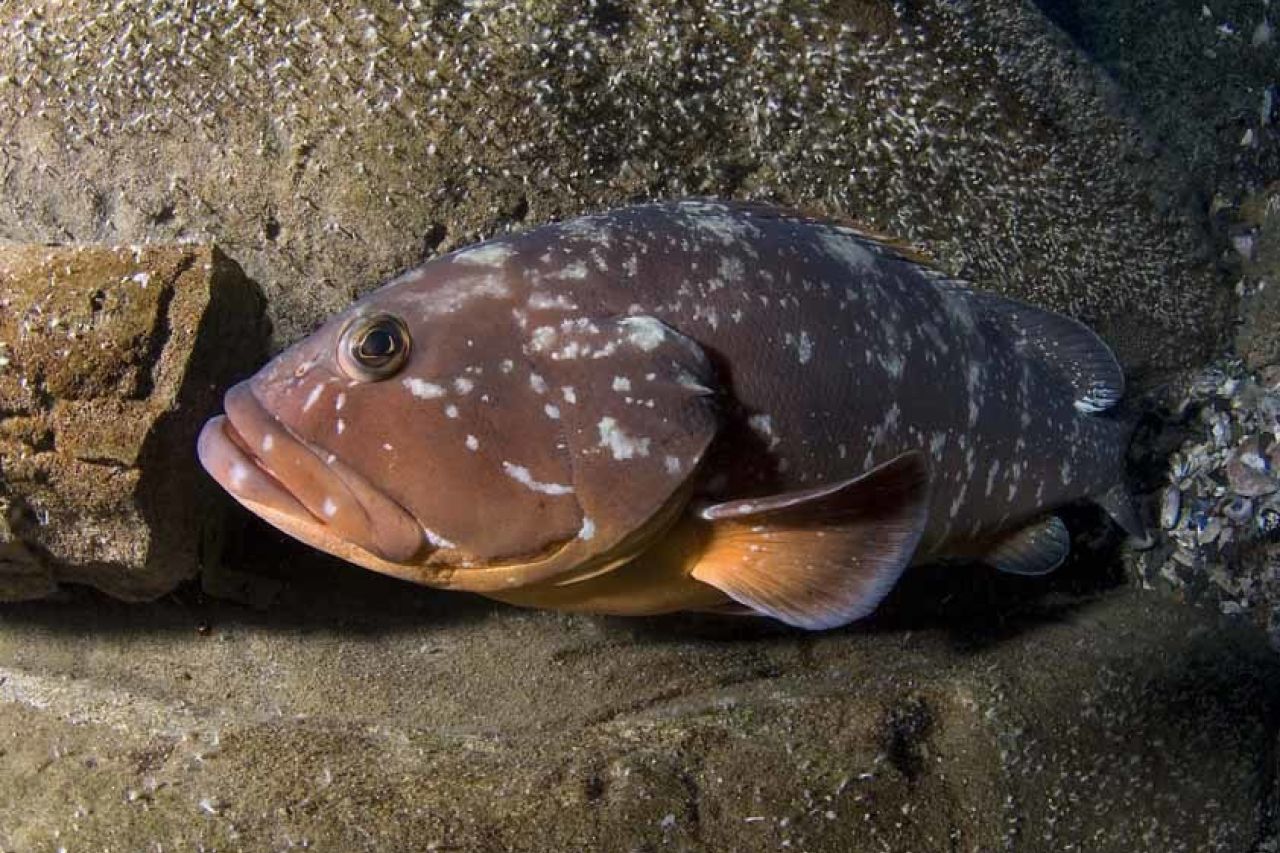
4. Schooling vs. shoaling
You may not have known this, but “schools” and “shoals” of fish are different things! And you can spot both behaviours in the Save Our Seas Foundation Shark Exhibit.
Shoaling is a social behaviour where fish stay together for social reasons, often so that they can be near potential mates or help keep a watch out for predators. A “shoal” is not necessarily coordinated, and fish may be swimming in different directions – something you can see our southern mullet and juvenile kob doing after a feed.
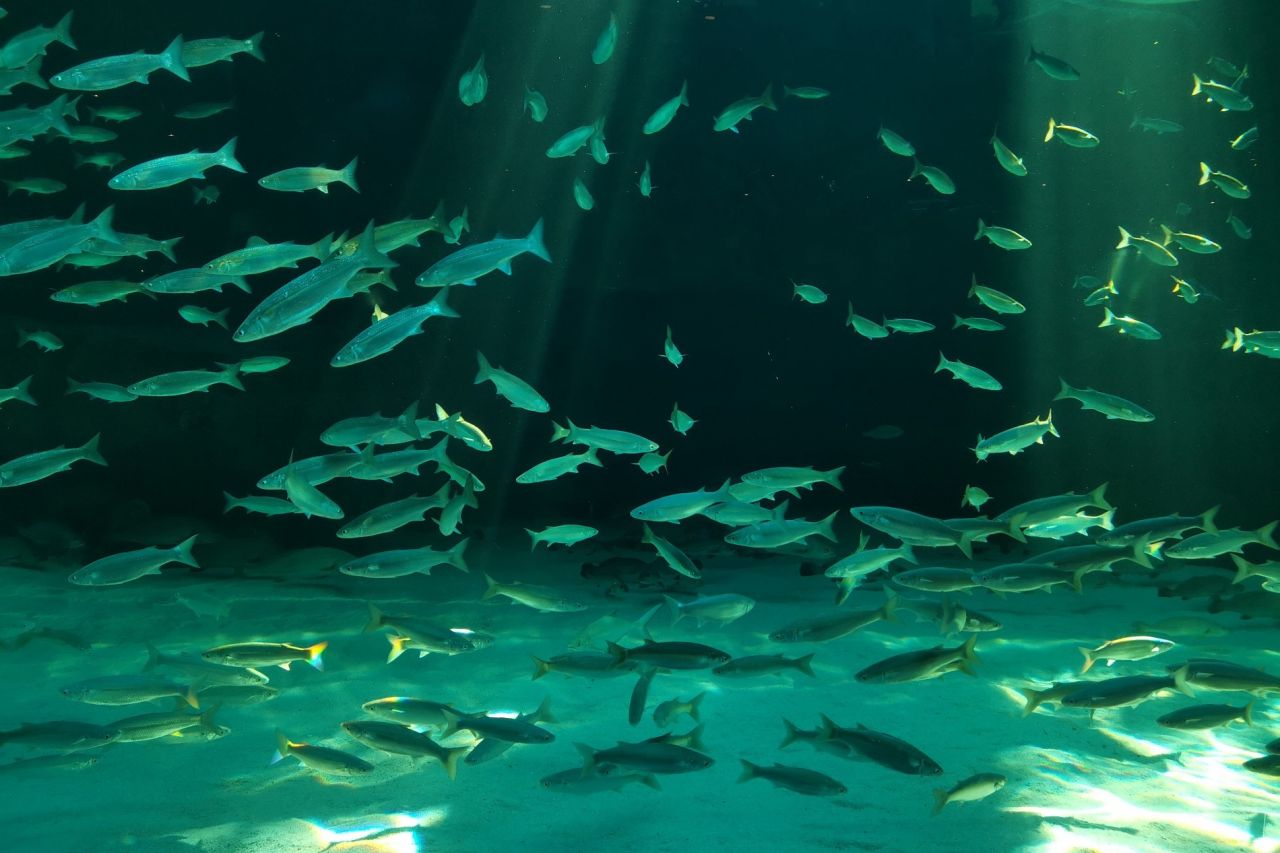
Schooling is a behaviour where a group of fish swim together in the same direction, to move faster and as a defence against predators. The Cape yellowtail and striped bonito in this exhibit often show off this behaviour, particularly when one of the sharks is nearby.
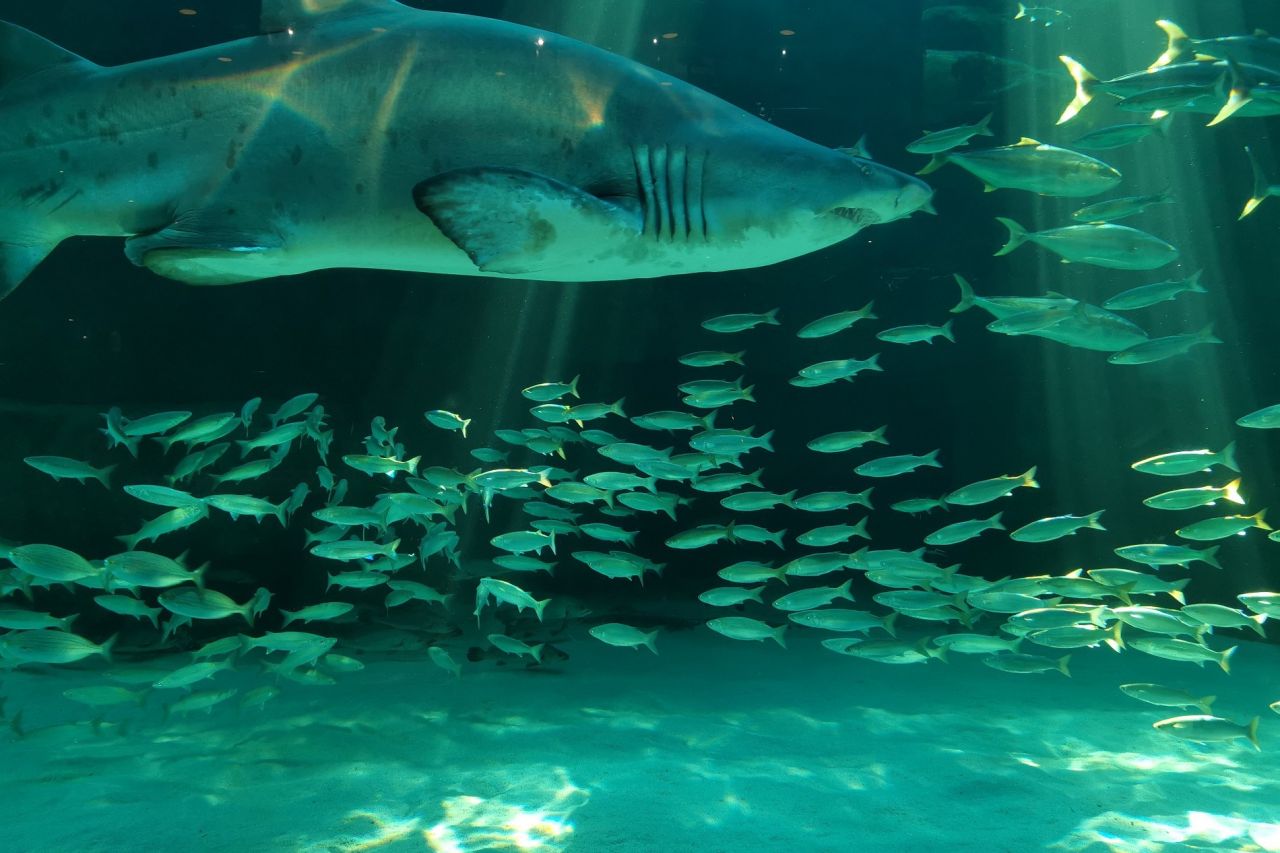
5. Snack time
The most exciting time of the day for any fish (and many humans) is feeding time. Throughout the day, the smaller predators of the exhibit are drop-fed a combination of fish, squid and redbait from the surface – so if you see a commotion during your visit, this is what you’ve spotted.
Once a week our scuba divers dive in with a bucket of I&J hake to feed to the ragged-tooth sharks. Each shark needs to eat a specific amount so that we know they are healthy, so, for this reason, these divers will feed the sharks single portions at a time so that they can count how many pieces of hake each shark has eaten. Be sure to stop and watch if you see our divers in action - feeding times are always a pleasant surprise.
6. Shark Alley
The ramp taking visitors between the floors of the Save Our Seas Foundation Shark Exhibit is known as Shark Alley - an interactive, informative space filled with fascinating facts about sharks. What does their body language mean? Is their skin really covered in tiny teeth? Do sharks sleep? Answer your questions and more at Shark Alley!
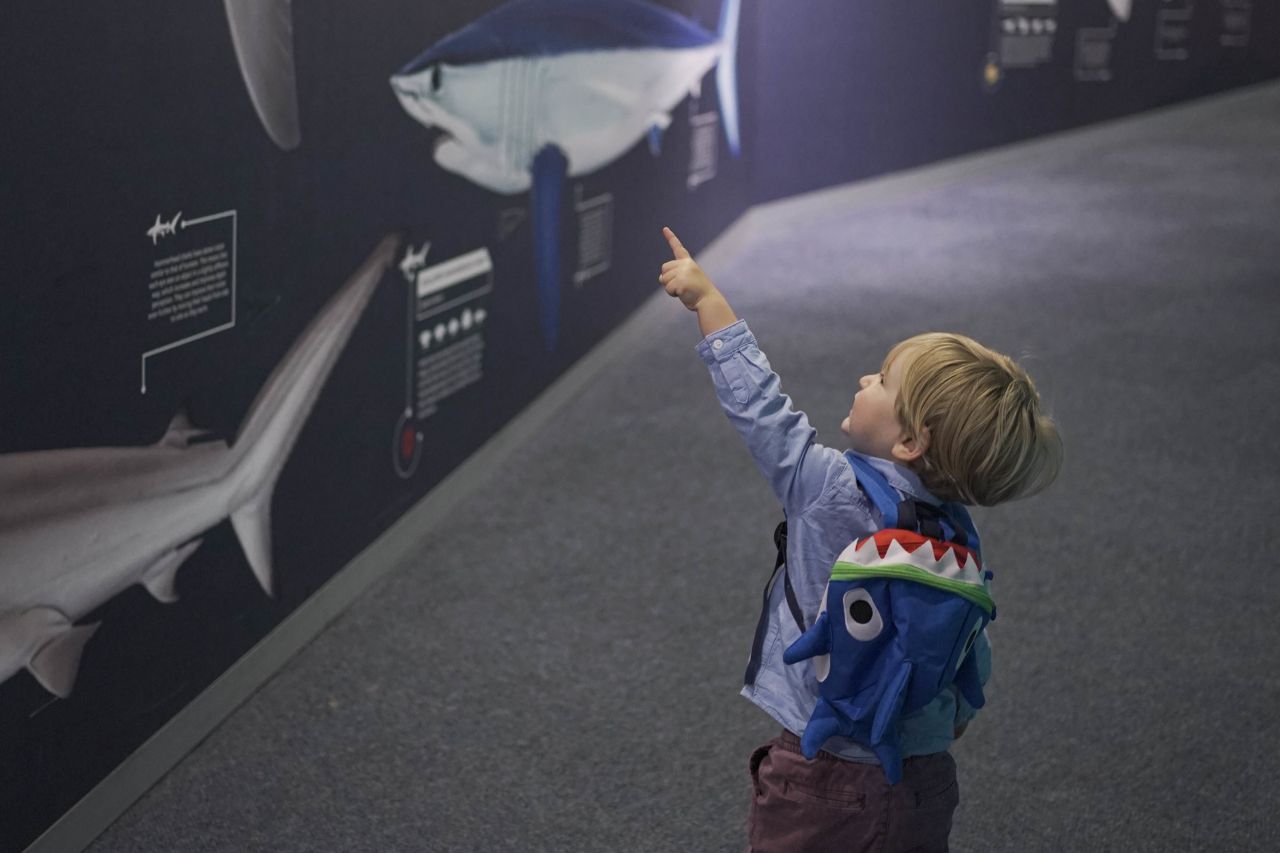
7. Crescent moons
The Cape yellowtail is an iconic local species, both as one of our most well-known marine animals and as sustainable local seafood. They get their name from their iconic yellow, crescent-moon shaped tails – and although they may not look it, they are powerful predators too!
Yellowtail are incredibly fast-growing fish, one of the factors that makes them sustainable. To fuel this rapid growth, yellowtail need to be voracious eaters and very energy efficient. They accomplish this by being able to hunt down one of the oceans most famous migratory fish – the sardine.
8. Diamond stripes
Along the floor of this exhibit, you’ll notice many small, dark grey giant kob scavenging for food, but if you pay close attention, you may also notice a few huge adult kob (usually on the opposite side of the rocks from wherever the sharks are).
Along the sides of these adult giant kob, you’ll notice a beautiful pattern – a line of diamond-shaped scales that follow the fish’s lateral lines – the organs used to detect electrical signals. These beautiful fish are known as “mulloway” in Australia, an Aboriginal word meaning “the greatest one.” We think that name is very fitting!
9. Lady humps
All the ragged-tooth sharks in the Save Our Seas Foundation Shark Exhibitare females, and one unique characteristic of all females in this species are the large humps on their backs (males also have humps, but they are much smaller).
These humps are the result of extra-thick skin armour, which is useful when mating. During mating, the male ragged-tooth shark will bite onto the female’s hump to stay close to her – some of the sharks in our care have the scars from this!
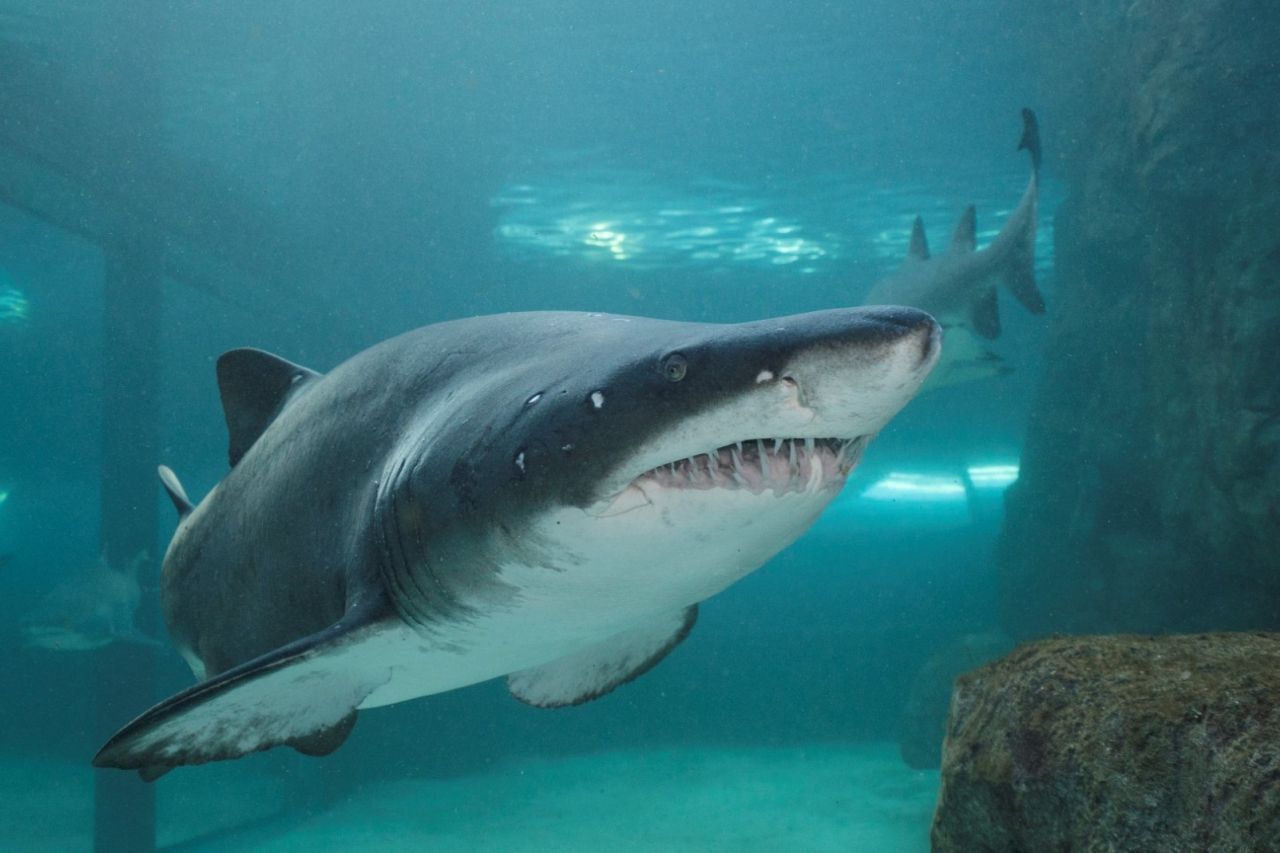
10. Racing bonitos
Last, but certainly not least, the striped bonitos of the Save Our Seas Foundation Shark Exhibit might not seem like your typical predators, but of all the animals in this exhibit, they are perhaps the most crafty! Ranging from South Africa to Hawaii, striped bonitos team up with young tuna to hunt – the tuna prey on larger fish and the bonitos prey on pretty much everything too small to be of interest to the tuna!
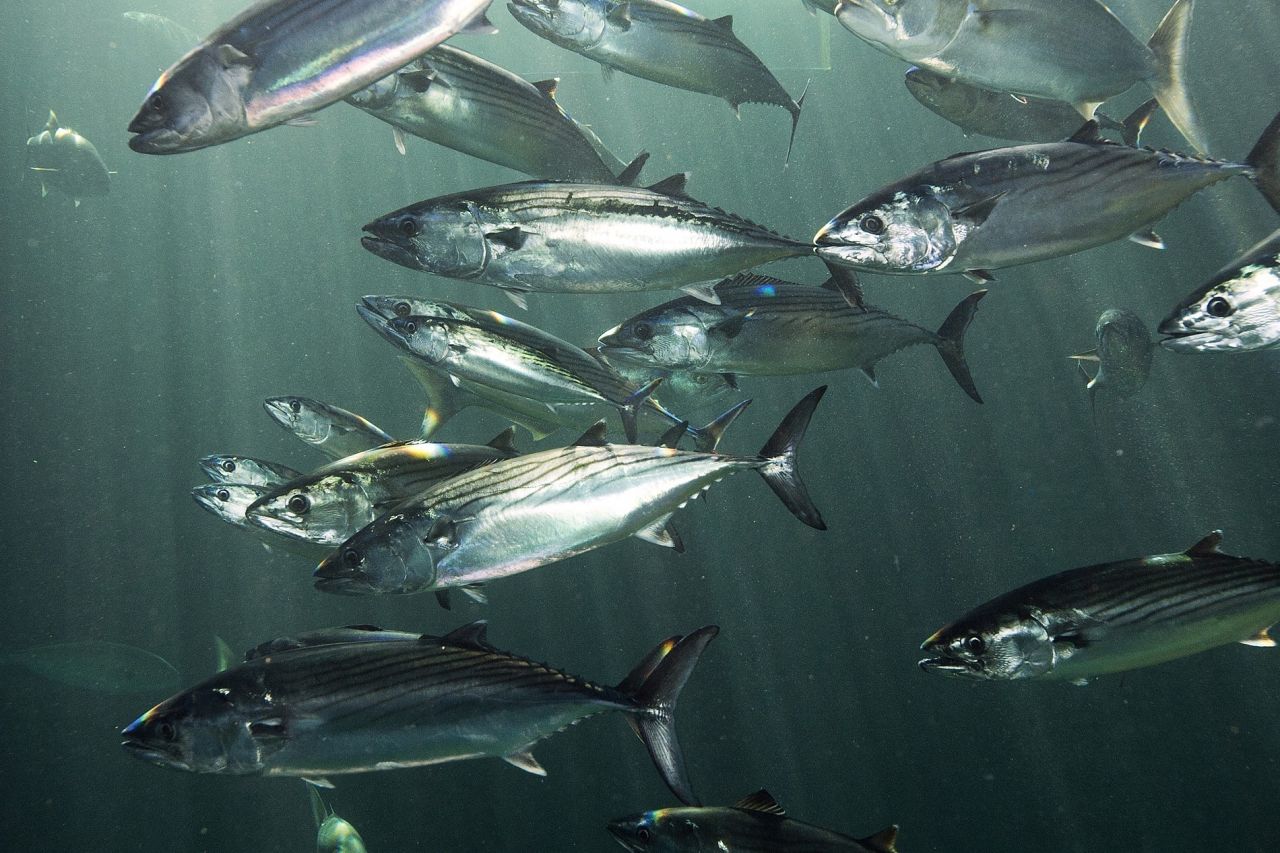
You may notice the bonitos spending a lot of time circling near to the water’s surface – this is where they would normally catch much their prey, such as small squids or juvenile fish. The dark, striped upper body and pale silver belly give these bonitos perfect countershading camouflage – proving that not all great predators need shark teeth!
BONUS: 11. Yourself!
Experience the Save Our Seas Foundation Shark Exhibit from the inside with an exhilarating Adventure Diving Experience!
